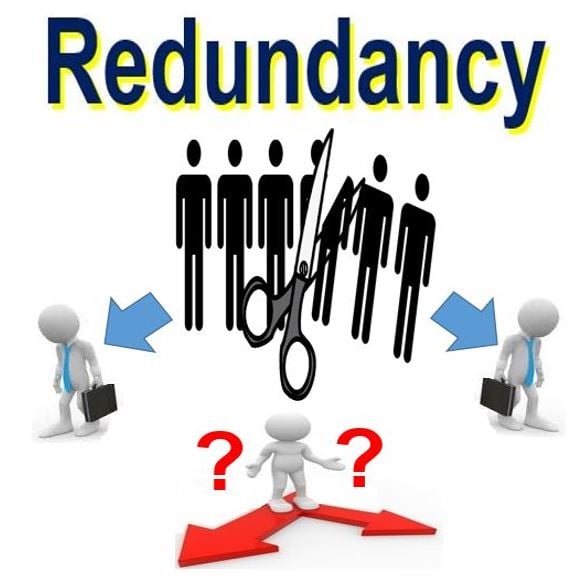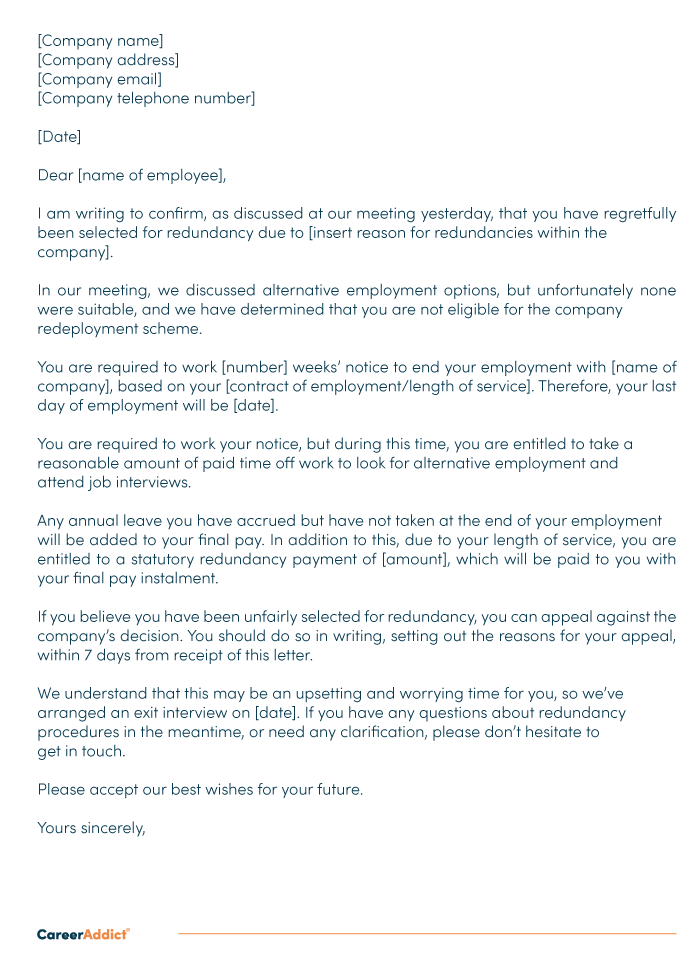If a Company Goes Bust Who Pays Redundancy? Legal Insights for UK Worker
If a Company Goes Bust Who Pays Redundancy? Legal Insights for UK Worker
Blog Article
Investigating the Interaction In Between Business Redundancy and Organizational Flexibility for Future Growth
In the dynamic landscape of today's service world, the detailed relationship in between firm redundancy and organizational flexibility emerges as a crucial element for continual growth and success. Business often deal with the challenge of striking a fragile balance in between maintaining a level of redundancy to alleviate threats and promoting flexibility to respond promptly to the ever-evolving market demands.
Importance of Firm Redundancy
Business redundancy is an important component that boosts business resilience and alleviates operational dangers. By including redundancy measures within the organizational structure, companies can much better endure unpredicted disruptions and changes in the business atmosphere. Redundancy functions as a tactical buffer, allowing companies to adapt and respond successfully to unforeseen difficulties without jeopardizing necessary procedures.
One secret aspect of the significance of business redundancy is its function in making sure connection throughout times of situation. When confronted with abrupt changes or emergencies, redundant systems, resources, or personnel can action in to preserve critical features and stop prevalent disturbances. This continuity not only safeguards the company's track record and customer trust yet additionally minimizes monetary losses and operational downtime.

Strategies for Organizational Versatility

An additional vital strategy is investing in innovation and facilities that can sustain adaptability and scalability. Executing digital tools, automation, and information analytics can enhance operations, improve effectiveness, and supply beneficial understandings for educated decision-making. Moreover, creating adaptable organizational structures that enable quick modifications to market dynamics and client requirements is necessary for remaining affordable in a swiftly advancing setting. By more info here proactively recognizing possible disruptions and opportunities, organizations can proactively thrive and adapt in an ever-changing business landscape.
Harmonizing Redundancy and Versatility
Accomplishing a harmonious balance in between operational redundancy and organizational flexibility is critical in browsing the intricacies of a dynamic organization environment. Striking the ideal equilibrium in between redundancy and adaptability is a fragile procedure that requires a deep understanding of the organization's objectives, industry dynamics, and danger resistance.
To achieve this balance, companies need to conduct routine evaluations of their operations to determine locations where redundancy is needed for threat mitigation and where adaptability can drive advancement and development. Carrying out flexible structures, cultivating a culture of constant discovering and improvement, and motivating open interaction throughout all levels of the organization are essential strategies to balance redundancy and flexibility efficiently. By lining up these two crucial elements, firms can position themselves for sustainable development and success in an ever-changing organization landscape.
Situation Research Studies on Adaptation Success
In analyzing circumstances of successful business adaptation, it ends up being noticeable that the interplay in between functional redundancy and adaptability is a specifying aspect in shaping resistant businesses. A DVD rental service, Netflix demonstrated exceptional adaptability by blog transitioning right into a streaming platform when digitalization interrupted the sector. These instance research studies emphasize the relevance of functional redundancy paired with business adaptability in promoting long-lasting growth and competitiveness.
Structure Strength for Future Growth
Structure resilience for future development calls for a strategic positioning of functional procedures with market characteristics and arising fads. Companies have to adjust to changing settings by cultivating a society of versatility, development, and constant improvement. Durability entails not just jumping back from obstacles yet likewise proactively getting ready for future challenges. One vital element of building resilience is buying durable risk administration methods to mitigate prospective disturbances. This consists of situation preparation, expanding supply chains, and creating contingency prepare for different backups (who pays redundancy money).
Additionally, fostering solid partnerships with stakeholders, such as customers, employees, distributors, and the area, is necessary for weathering uncertainties and preserving trust and assistance throughout rough times. Effective interaction and transparency play an essential role in building resilience, as they aid align assumptions look at this website and facilitate collaboration in navigating uncertainties.
Additionally, companies need to prioritize knowing and advancement initiatives to upskill workers and outfit them with the needed devices to adjust to altering circumstances. By buying their workforce, business can improve their adaptability and dexterity, ultimately reinforcing their resilience for lasting future growth.
Final Thought

In the vibrant landscape of today's company globe, the detailed connection in between company redundancy and business flexibility emerges as a vital factor for sustained growth and success. Business frequently face the obstacle of striking a delicate balance between maintaining a level of redundancy to reduce risks and fostering flexibility to react promptly to the ever-evolving market demands.To accomplish this equilibrium, firms need to conduct routine assessments of their operations to determine areas where redundancy is essential for risk reduction and where versatility can drive development and growth.In conclusion, the interplay between company redundancy and business adaptability is critical for future development. Structure resilience through a mix of redundancy and versatility will make sure that firms are prepared for the obstacles of the future.
Report this page